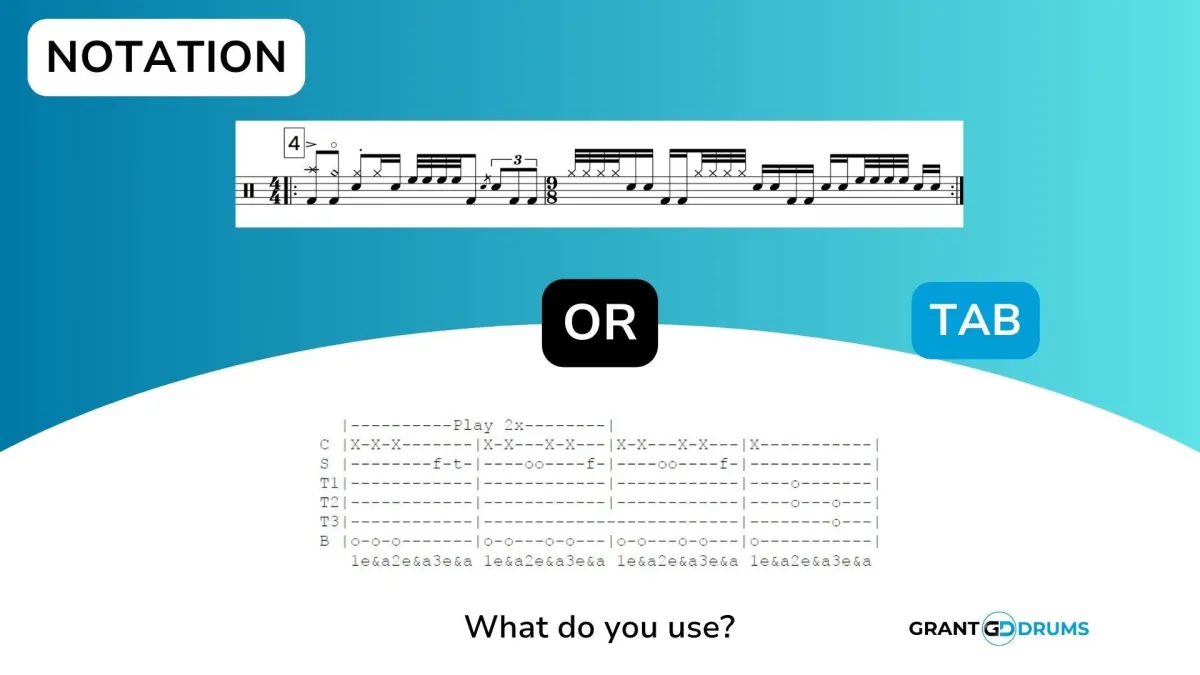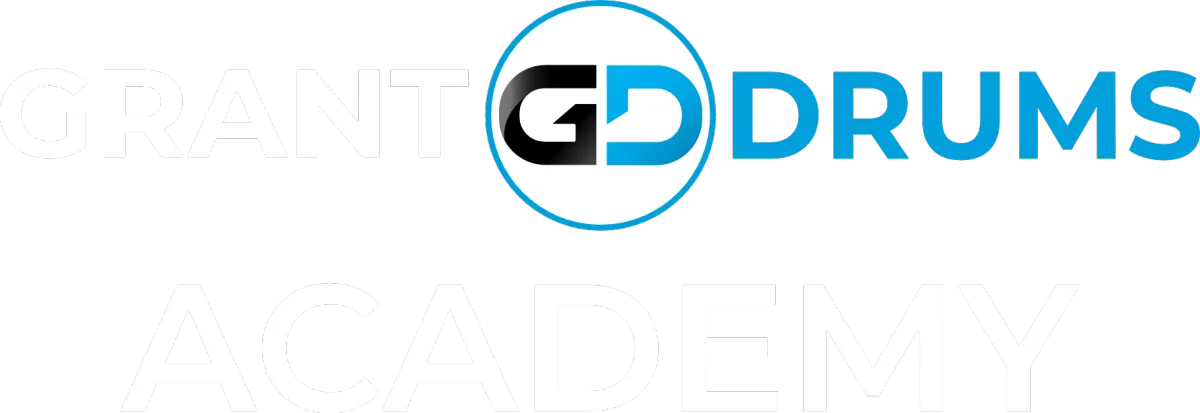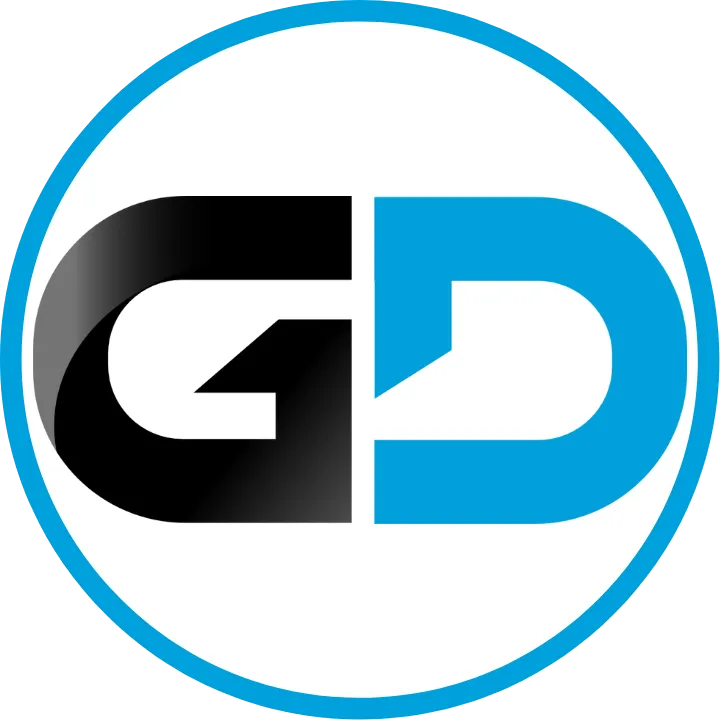ACADEMY MEMBERS
LEARNING TIME
with


Cracking the Code: Drum Notation vs. Tab - Finding Your Path to Rhythmic Mastery
Drummers, have you ever stared at a page of sheet music filled with squiggles and wondered, "There's a better way, right?" Or maybe you've seen drum tabs online and thought, "This seems simpler, but is it enough?" Well, fret no more! Today, we'll delve into the world of drum notation vs. tab, helping you decide which path leads to rhythmic mastery.
Drum Notation: The Rosetta Stone of Rhythm
Standard drum notation, like sheet music for other instruments, offers a comprehensive and versatile language for drummers:
Complete Picture: Notation captures not only the pitch (which drum to hit) but also the rhythm (note lengths and rests), dynamics (volume), and even specific techniques (flams, rim shots).
Universal Communication: Drummers worldwide can understand and interpret properly written notation, making it ideal for learning from different sources and collaborating with other musicians.
Musical Context: Notation integrates seamlessly with sheet music for other instruments, providing a clear picture of the entire musical arrangement.
However, drum notation has its challenges:
Learning Curve: Reading and understanding standard notation takes time and dedicated practice.
Complexity: Drum scores can appear cluttered, especially for intricate beats, potentially overwhelming beginners.
Limited Flexibility: Notation might not always capture the nuances of a drummer's unique style.
Drum Tab: A Beginner's Gateway or a Creative Crutch?
Drum tabs offer a simplified approach to learning drum parts:
Easy Entry Point: Tabs use letters and symbols on a staff to represent which drum to hit, making them easier to grasp for beginners.
Focus on the Basics: Tabs typically focus on the basic rhythm, omitting details like dynamics and specific techniques.
Genre-Specific Applicability: Tabs are often created for specific genres, offering a quick way to learn popular grooves.
But drum tabs also have limitations:
Limited Information: Tabs lack the richness of notation, neglecting dynamics, accents, and other subtleties.
Transferability Challenges: Tabs are often specific to a particular song or drummer's style, making it harder to apply the knowledge broadly.
Musical Isolation: Tabs don't show the drum part in relation to other instruments, hindering understanding of the overall musical context.
Finding Your Rhythmic Path
The choice between drum notation and tab depends on your learning goals and drumming aspirations:
Building a Foundation: If you're new to drums, starting with tabs can be a helpful entry point, but eventually transition to notation for a more complete understanding.
Serious Musicianship: For aspiring professional drummers, mastering drum notation is essential for reading complex scores, collaborating with other musicians, and learning from a wider range of resources.
Targeted Learning: Tabs can be a great supplement for quickly learning specific grooves or exploring a particular drumming style.
The Power of Duality: Mastering Both Worlds
The ideal scenario? Becoming proficient in both drum notation and tab! Here's why:
Versatility: Being comfortable with both languages expands your learning options and allows you to tackle any drumming challenge.
Deeper Understanding: Reading notation alongside tabs helps you understand the "why" behind the rhythmic patterns, fostering a deeper musical connection.
Broader Horizons: Mastering both opens doors to a wider range of drumming resources and educational materials.
Remember: There's no single "correct" path. Embrace both drum notation and tab as tools in your drumming journey.With dedication and practice, you'll unlock the secrets of rhythm and become a well-rounded drummer!
Happy drumming, and may your exploration of notation and tab lead you to rhythmic mastery!
Sick of losing focus and trying every drum exercise you can find on YouTube?
It's time for the...


FREE DRUM CHART
CHOP CHOP
Drum Chart
22 Time Signature Changes in 59 Seconds!
Enter your details and get the chart to your inbox in minutes!
You will receive your Free PDF Chart to your inbox. Please check your spam filters if you can't see it.
Your email will come from help@mail.grantdrums.com



